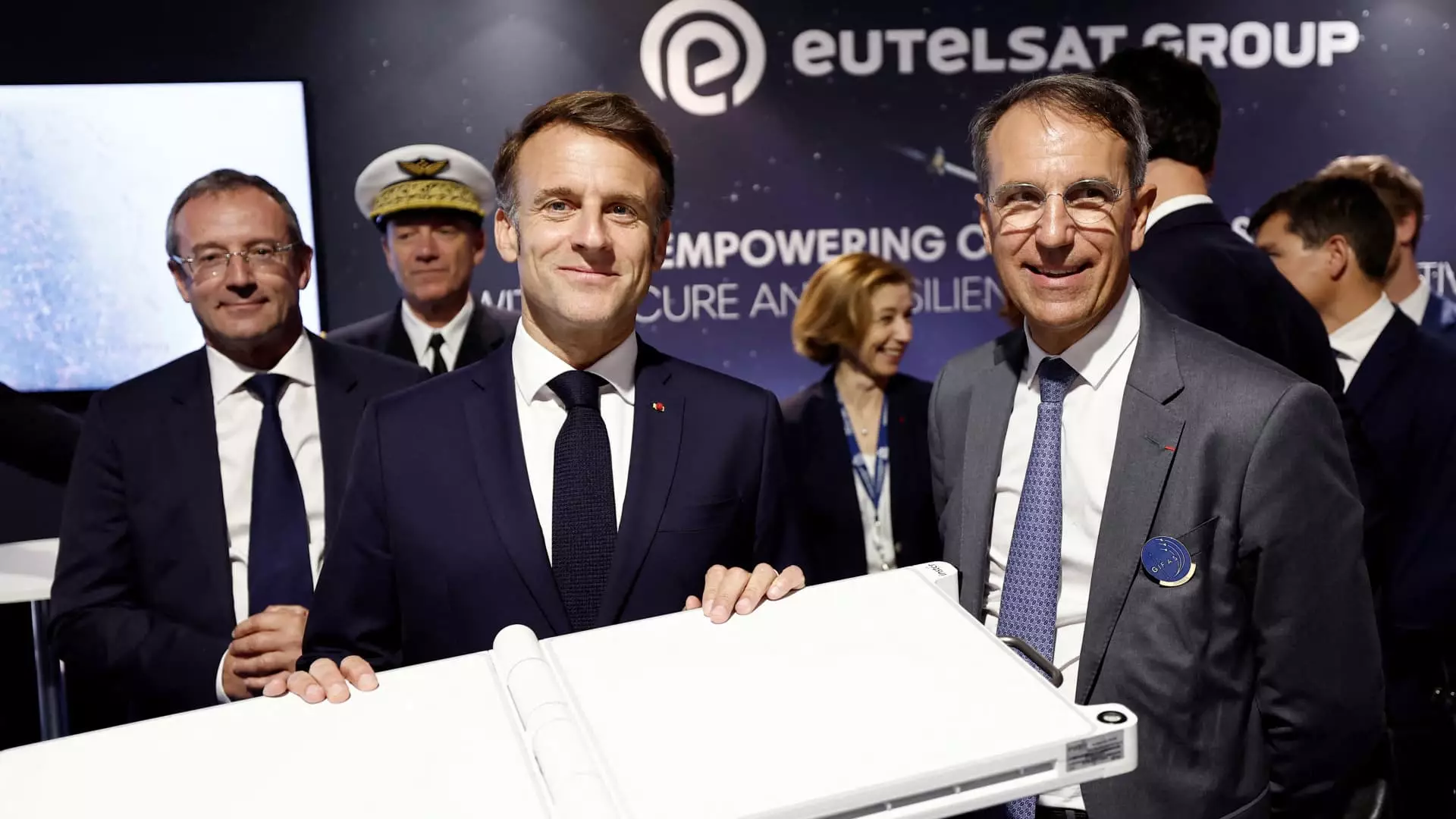Europe has long fancied itself as a global leader in technology, yet the reality of its satellite internet ambitions paints a far less flattering picture. France’s Eutelsat, the continent’s flagship attempt to challenge Elon Musk’s Starlink, recently received a massive €1.35 billion boost from the French government. At first glance, this injection of capital might seem like a bold stride toward technological independence. However, beneath this veneer lies a struggle marked by insurmountable challenges, obsolete infrastructure, and a fragmented vision that fails to match the technological might amassed by America’s SpaceX.
The European project is not just a commercial endeavor; it is political theater designed to demonstrate sovereignty. As political leaders like Emmanuel Macron trumpet space investments as a “gauge of international power,” the reality is that Europe today remains a technological follower rather than a leader in satellite broadband. Eutelsat’s dominant shareholder status being claimed by the French state shifts the company from a private enterprise into a quasi-governmental tool—an unsettling blend of state intervention and technological conservatism that may stifle innovation more than foster it.
Disproportionate Scale—A Mountain Too High to Climb
Starlink’s advantage is staggering. With over 7,600 operational low Earth orbit (LEO) satellites, SpaceX has constructed an infrastructure unmatched anywhere on the planet. Eutelsat’s merged entity, including its British arm OneWeb, operates a scant 650 satellites—a figure barely a tenth of Starlink’s scale. Such disparity is not an accident but a symptom of deeper structural inadequacies within Europe’s aerospace investment strategies.
Eutelsat’s satellites have begun to age, forcing the company to prioritize replacements before they can even consider expansion. This presents a vicious cycle: while Elon Musk is launching dozens of satellites monthly, boosting coverage and upgrading technology on the fly, Europe remains mired in the painstakingly slow process of patching up existing capacity. The ambition to compete with Starlink requires a monumental shift in capital injection, manufacturing pace, and launch frequency—realities that Europe has yet to meet convincingly.
Technological Inferiority Masquerading as Strategic Choice
A critical technical chasm also divides Eutelsat and Starlink. OneWeb’s bent-pipe architecture, requiring signals to be relayed through ground stations, pales in capability compared to Starlink’s innovative space-based mesh network. This fundamental architectural difference hinders coverage efficiency and latency—key parameters for consumer adoption and military-grade applications.
Moreover, Eutelsat’s hybrid reliance on both LEO and geostationary orbit (GEO) satellites complicates its strategic focus. GEO satellites, while covering vast areas, reserve inherent limitations in latency and signal quality that aren’t issues for Starlink’s exclusively LEO constellation. Europe’s piecemeal approach appears like an outdated compromise—clinging to legacy technology while attempting to catch up in the new frontier, rather than leapfrogging ahead.
The False Promise of European Technological Sovereignty
The European Union and individual member states’ obsession with autonomous space infrastructure feels increasingly like a hollow pride exercise. In practice, Europe’s limitations in launch technology keep it dependent on American providers, ironically relying on the very entities it wishes to compete against. The launch market is dominated by SpaceX’s reusable rockets, which dramatically reduce deployment costs, a feat Europe’s traditional aerospace industries have yet to replicate.
France’s investment and the EU’s aspirations seem less about beating Starlink at its own game and more about retaining a foothold in a domain quickly overshadowed by American commercial giants. This focus on sovereignty, while understandable from a political viewpoint, risks locking Europe into capital-intensive projects with low returns and outdated technology, thereby widening the competitive gap rather than closing it.
Market Realities Versus Political Aspirations
Even Eutelsat’s own leadership acknowledges the grim reality: replacing Starlink’s connectivity, especially in sensitive operational theaters like Ukraine, is currently impossible. The geopolitical entanglement between the U.S. and Ukraine only underscores this reliance, with Starlink remaining the primary provider on the ground.
Deploying satellite internet requires not only sophisticated hardware but also a robust ecosystem—including user terminals and spectrum management—that Europe has struggled to build on a scale comparable to SpaceX. While Eutelsat hopes to exploit niches requiring jurisdictional control and security—such as government and defense contracts—this specialized market cannot compensate for the absence of a mass-market broadband alternative.
The Way Forward: Brave, But Cautiously Pessimistic
Eutelsat’s recent maneuvers show a company and continent trying to wield state power to correct market failures. The new leadership under Jean-François Fallacher might bring telecommunications experience, but steering a competing satellite broadband giant requires more than management acumen—it demands vision and capital that Europe hasn’t fully demonstrated.
If Europe is serious about reducing dependency on American technology giants, it must face uncomfortable truths: massive investments, technological innovation on par with Silicon Valley risk tolerance, and accelerating satellite deployment with greater urgency. Without these, efforts like Eutelsat will remain largely symbolic—a national pride project that ultimately acknowledges Europe’s position as a junior player in the vast, high-stakes satellite broadband battlefield.
Europe’s space ambitions are noble but, for now, remain outstripped by American commercial dynamism and innovation. Starlink’s scale and technological advancements are imposing barriers that no amount of bureaucratic zeal can easily overcome. The real question is whether Europe’s political leaders are willing to let market forces catalyze genuine innovation, or if they will continue to cling to expensive sovereignty projects that may only serve as ghosts in the shadow of SpaceX’s colossal success.

